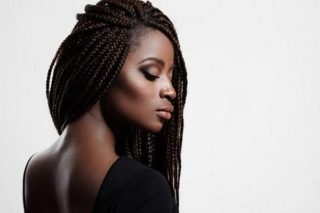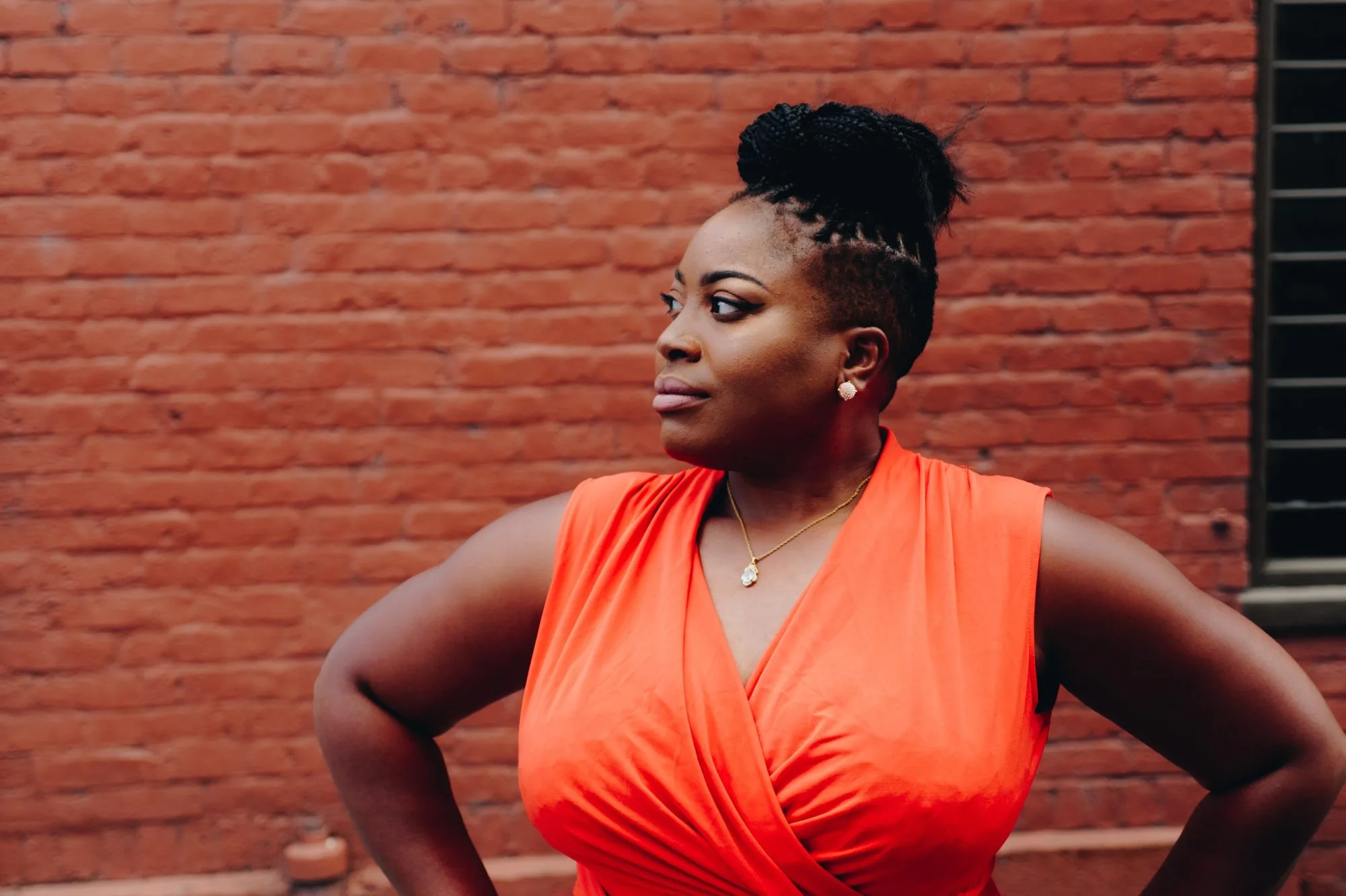The black hair care industry is worth billions globally. For instance, in 2018 the black hair care industry in the United States raked in around $2.51 billion dollars. It’s quite clear that black hair plays a significant role in black culture. Unfortunately, as with the rest of the world, our worlds have been flipped upside down as a result of a global pandemic and regulations that have asked for us to stay home, leaving us to fend for our coils, ourselves.
A black woman’s hair isn’t just hair, but rather a means of self-expression, confidence, and comfort. Now that we can’t go to the salon, we’re now faced with the issue of how we can maintain our hair indoors, especially if we’ve never done so before.
Thankfully, it’s not that difficult and the health of your coils are in no danger. Regardless of whether you have a wig, weave, braids, relaxed or natural hair, you can still keep your hair healthy under quarantine. All you need is a little patience and a few black haircare hacks.
Black hair quarantine hacks
Natural hair hacks
Those with natural hair already understand that natural hair requires specific products and careful maintenance to stay healthy.
However, if you haven’t been natural for long, or you’re transitioning, it’s understandable if you have concerns about how you’re going to care for your coils in the coming weeks.
1. Must have tools
Firstly, it’s important that you have the tools that will help you take care of your hair. These must-haves are:
- A Sulfate-free Moisturizing Shampoo
- A Moisturizing Conditioner
- Leave-In Conditioner or butter
- Hair oil
- A detangling comb
- Plastic Shower Cap
2. Wash day
One of the best ways to maintain your natural hair is by adopting an effective hair wash routine (affectionately referred to as wash day).
Step 1: Pre-pooing and detangling
A typical wash day should begin with you pre-pooing your hair. This is done to protect it from the shampooing process, reducing the risk of your hair being stripped of moisture or its natural oils. Pre-pooing can be doing with hair oil or even a conditioner. Simply apply your oil or conditioner of choice to your hair and let it sit for at least 30 minutes.
![unexplored african [longevity live]](https://longevitylive.com/wp-content/uploads/2019/02/accessories-afro-beautiful-935985-320x214.jpg) You can also detangle your hair as you pre-poo. You can either use a detangling brush or your fingers. If your hair is dry, it would be advisable to use your fingers (as well as a detangling cream). Only use a detangling brush on hair that is slightly damp. Detangling helps to remove tangles as well as hairs that may cause knots and breakage.
You can also detangle your hair as you pre-poo. You can either use a detangling brush or your fingers. If your hair is dry, it would be advisable to use your fingers (as well as a detangling cream). Only use a detangling brush on hair that is slightly damp. Detangling helps to remove tangles as well as hairs that may cause knots and breakage.
Step 2: Shampoo and conditioner
A healthy scalp means happy hair and the best way to keep a scalp healthy is to keep it clean. A sulfate-free shampoo is the best choice for natural hair as sulfates can strip hair of its natural oils. In regards to how often you wash your hair, every 7 to 10 days should help to keep it clean and healthy.
That said, you should also practice co-washing in between your wash days. Co-washing involves washing your hair with a conditioner or co-washing product. This helps to provide your hair with the necessary moisture and it also prevents the stripping of the hair’s natural oils
After washing your hair, make sure to blot-dry with a microfibre towel or old t-shirt as a regular towel can cause breakage.
Step 3: Deep conditioner
A deep conditioner not only hydrates the hair, but it also helps to address specific concerns.
It’s advisable to use a rich creamy conditioner as this will help to keep your hair hydrated and super nourished. You should then cover your hair with a plastic cap and keep it on for 30 minutes to an hour. You can also apply heat as this helps the hair absorb the product more easily.
Step 4: Protein Treatment
To prevent protein overload, one should only have a protein treatment every 4 to 6 weeks.
A protein treatment helps to not only add volume to your hair, but it also helps to reduce breakage and prevent split ends.
3. Adopt the LOC/LCO method
One of the biggest things that people with natural hair struggle with is moisture. Unfortunately, natural hair is susceptible to dryness and, in turn, breakage.
Therefore, it’s important to keep your hair hydrated and one of the best ways to do so is with the LOC/LCO method. L stands for liquid, O stands for oil, and C stands for cream. This technique focuses on layering your hair with products in an effort to lock moisture into your hair.
How do I do the LOC/LCO?
- Apply a liquid using a spray bottle. The liquid of choice can either be water or a water-based moisturizer.
- Use a thick hair oil blend to seal in the moisture.
- Follow this with a water-based cream or butter. If you have a looser curl pattern, you can choose a leave-in moisturizer but if you have thicker and more coily hair type, then go for hair butter
Whether you opt for LCO or LOC, the order is totally dependent on what your hair prefers. Once you’ve moisturized and layered your hair, the next hack you should be aware of is protective styles.
4. Experiment with protective styles
Now that you have some free time on your hands, why don’t you pick up a few hairstyling tricks? Protective styles are particularly important for natural hair as they help to protect the hair from harsh elements that may damage it. Braids, twists or weaves are examples of protective styles, as are simple hairstyles such as twist outs and Bantu knots.
 It’s important to make sure your hair is moisturized and detangled before gently styling it. If you’re not sure how to begin, there are plenty of YouTube channels that offer easy tutorials. Make sure to choose a YouTuber who has the same hair type as you.
It’s important to make sure your hair is moisturized and detangled before gently styling it. If you’re not sure how to begin, there are plenty of YouTube channels that offer easy tutorials. Make sure to choose a YouTuber who has the same hair type as you.
What about trimming my hair?
Yes, it’s important to trim your hair every 4 to 6 weeks, but I don’t recommend that you do it if you’ve never cut your hair before. Rather, inspect the ends of your hair and use sharp hair scissors to trim any single strand knots, leaving the rest for post-lockdown when you can finally visit your salon.
Maintaining your weaves during quarantine
Keeping your weave healthy in quarantine really depends on how long you’ve had it in for.
If you’ve had it in for less than a month, then it’s important to try to keep it clean. Try not to wear it down constantly, but instead pull it back in a ponytail. You can also shampoo it if you feel that it’s become dirty.
However, if your weave is older than a month, then it may be time to take it out. However, if you happen to live alone, then you’ll need to be careful when it comes to cutting the thread. It would be advisable to use manicure scissors. Once you’ve successfully removed the weave, give your hair a good wash, apply a conditioning treatment, and let it breathe.
Home-wig hacks
Now if you rely on your stylist to keep your wigs fresh and healthy, then you may find yourself a bit stumped. But fret not because, with a few hacks, you can refresh your wigs in quarantine.
1. Keep them clean
Even if you’re indoors, wigs can easily attract dust and dirt so it’s important to keep them clean. To do this, mix a few pumps of your shampoo, argan oil, and hot water in an empty basin. Once done, place your wig into the water for a few minutes. After this, use lukewarm water to wash your wig, and follow this up with conditioner. This process will not only help to cleanse your wig, but it will also improve its appearance.
Once you’ve rinsed your wig with warm water, use a T-shirt to remove the excess water before laying your wig flat to dry.
2. Use dry shampoo
Like your real hair, you can over wash your wig, and this can leave you with a dry and lifeless wig. This is why it’s advisable to wash your wigs every 5 to 10 wears.
 If you’re worried about the state of your wig in between washes, you can use dry shampoo as this will help to keep away dirt and oils.
If you’re worried about the state of your wig in between washes, you can use dry shampoo as this will help to keep away dirt and oils.
3. Trim your wig
No matter how well you take care of your wig, over time the ends can get damaged. This is why you should regularly inspect the ends and trim where need be.
While you’re caring for your wig, it’s important to remember that your real hair should always be your first priority under your wigs. Make sure that it’s properly braided down and that you always use a cap to protect your edges.
Caring for your braids during lockdown
When it comes to your braids, it’s important to not be lazy when it comes to maintenance. 
Here’s how you can keep them looking fresh:
- Never keep your braids in for longer than six weeks.
- Invest in a lightweight, moisturizing hair spray that will help keep your hair fresh and hydrated.
- To keep your hair fresh and clean, mix your regular shampoo with a bit of water and spray this on your hair and scalp. Then, gently rinse or use a cloth to wipe down your scalp.
- Wrap your braids at night with a silk scarf as this will help to protect the moisture level in your hair.
- Don’t brush and pull on the braids and allow your scalp time to rest and repair.
- If you feel that your braids are looking lackluster, re-braid the front hairline.
Don’t forget about your edges
If your edges are weak, it’s important to not do anything tight around your hairline. You can also apply hair oils such as castor oil to the area to help them grow back.
Keep your hands out of your hair
When we’re stressed, or bored, we tend to subconsciously pull or play with our hair and this can not only weaken it but also create tension.
 It is for this reason that we need to find ways to keep ourselves from playing with it. If you find that you play with your hair when you’re anxious or bored, it would be advisable to engage in some stress-relieving activities. These can include reading a book, mediation, or even gardening – all three will keep your mind and your hands out of your hair.
It is for this reason that we need to find ways to keep ourselves from playing with it. If you find that you play with your hair when you’re anxious or bored, it would be advisable to engage in some stress-relieving activities. These can include reading a book, mediation, or even gardening – all three will keep your mind and your hands out of your hair.
Eat for your coils
In addition to beauty hacks, it’s important to remember that your hair is what you eat. So if you want to keep healthy coils, then you should include the helpful nutrients in your diet.
Nutrients such as iron, protein, omega-3 fatty acids, and vitamins A, C, D, and B3 each help to encourage healthy hair growth. Try to include dark leafy vegetables, legumes, nuts, fruits, avocados, and mushrooms into your diet as this will help to keep your mane happy. It’s also important to drink plenty of water.
Want to know more?
In addition to maintaining the health of your afro, why don’t you also maintain the shape of your booty? In fact, doing booty exercises can help to keep you from sitting on your butt all day long and the good news is, there are plenty of challenging, yet simple booty exercises that you can do from home that will keep your booty strong and firm.





![women [longevity live]](https://longevitylive.com/wp-content/uploads/2020/01/photo-of-women-walking-down-the-street-1116984-100x100.jpg)









